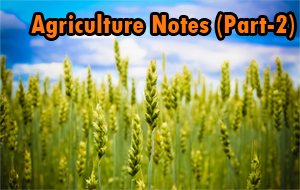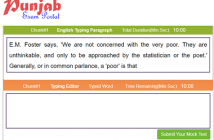This transformation from a plant to a finished product involves three types of economic activities. These are
1) Primary – Primary activities include all those connected with extraction and production of natural resources or raw materials from the Earth. Example – Agriculture, Fishing and Gathering
2) Secondary – Secondary activities involves the transformation of raw materials into goods, Example – Manufacturing of steel, Baking of bread and Weaving of cloth
3) Tertiary Activities – Provide support to the primary and secondary sectors through services. Example – Transport, trade, banking, insurance and advertising
Land Use Categories Land
Land Use Categories Land-use records are maintained by land revenue department. The land use categories add up to reporting area, which is somewhat different from the geographical area. The Survey of India is responsible for measuring geographical area of administrative units in India. Have you ever used a map prepared by Survey of India? The difference between the two concepts are that while the former changes somewhat depending on the estimates of the land revenue records, the latter does not change and stays fixed as per Survey of India measurements
The land-use categories as maintained in the Land Revenue Records are as follows :
- Forests : It is important to note that area under actual forest cover is different from area classified as forest. The latter is the area which the Government has identified and demarcated for forest growth. The land revenue records are consistent with the latter definition. Thus, there may be an increase in this category without any increase in the actual forest cover.
- Land put to Non-agricultural Uses : Land under settlements (rural and urban), infrastructure (roads, canals, etc.), industries, shops, etc. are included in this category. An expansion in the secondary and tertiary activities would lead to an increase in this category of land-use.
- Barren and Wastelands : The land which may be classified as a wasteland such as barren hilly terrains, desert lands, ravines, etc. normally cannot be brought under cultivation with the available technology.
- Area under Permanent Pastures and Grazing Lands : Most of this type land is owned by the village ‘Panchayat’ or the Government. Only a small proportion of this land is privately owned. The land owned by the village panchayat comes under ‘Common Property Resources’.
- Area under Miscellaneous Tree Crops and Groves(Not included is Net sown Area) : The land under orchards and fruit trees are included in this category. Much of this land is privately owned.
- Culturable Waste-Land : Any land which is left fallow (uncultivated) for more than five years is included in this category. It can be brought under cultivation after improving it through reclamation practices.
- Current Fallow : This is the land which is left without cultivation for one or less than one agricultural year. Fallowing is a cultural practice adopted for giving the land rest. The land recoups the lost fertility through natural processes.
- Fallow other than Current Fallow : This is also a cultivable land which is left uncultivated for more than a year but less than five years. If the land is left uncultivated for more than five years, it would be categorised as culturable wasteland.
- Net Area Sown : The physical extent of land on which crops are sown and harvested is known as net sown area.
Varieties of Different Important Crops
- Rice : (First introduced drawf variety into India), IR-8, Jaya (Blast Resistant),Padma, Mashuri, Kakatiya, Pusa Basumati, Pusa Jaldidan, Lunisree, Ratna, TKM-6 (Stem borer resistant), Kataribogh (Tungro resistant), ADT-27 (indica x japonica), Santchousong (High protein content), Dee-Gee-Woo-Gen, Bala (Drought resistant), IR-20 (Resistant to Blast, BLB, stemborer, leafhopper).
- Wheat :
- Introduction from Mexico: Lerma Rojo and sonara-64.
- Single gene dwarf varieties : Safed lerma, Sharbati sonara, pusa Lerma, Chotu lerma.
- Double gene dwarf varieties: Shera, Arjun, Janak.
- Triple gene dwarf varieties: Heera, Moti.
- HD series, Kundan, C-306 (drought resistant).
- Chickpea : Pusa 256 PBG-1 203, Pusa 209: Gaurav ICCC-32, Ajay.
- Pigeonpea : UPAS-120 9short duration), ICPH-8 (First Hybrid), (Arhar) Pusa 33, Pusa Agati, ICPL 37. Hira, Mukta, Bahar, Prabat. SBH-8. Sugarcane: Noble Canes: CO-419, Co-997
- Soybean : Bragg, Lee Clark-63, Shilajeet, Pusa 16, 20, 24, PK-327
- Tomato : Pusa Sheetal, Pusa-120, Pusa Early Dwarf, Pusa Ruby, Margologe, Sioux,· Pusa Gauray, Best of All.
- Mango :
- Malika (neelam x dasheri),Amrapali (dasheri x neelam)
- Ratna (neelam x alphonso)
- Bannana :
- Poovan (larplur, Chakrakeli), Basrai, Champa
- Hill Bananas : Sirumali, virupakshi
- Culinary varieties : Monthan, Gross Mitchell, Mindoli Robusta Rasthali
- Rose: Chitra, Dr. B. P. Pal, Priyadarshini, Nehru Ceremony, Jawhar, Abisarika, Banjara, Randhawa.
- Califlower: Pusa Deepali, Pusa synthetic, Pusa Katki, Early Snowball, Kanwari ,Early, Patna, Patna Main crop, Snowball-16, Sutton’s Snowball Japanese improved, Dania, Aghani, Poosi.
Top producing state
Apple – Jammu & Kashmir Largest
Banana – Tamil
Cashew nut – Maharashtra
Citrus, Lemon, Mosambi – Pradesh
Coarse Cereal – Karnataka, Rajasthan
Cocoa – Kerala
Coconut – Tamil Nadu
Cotton – Gujarat
Grapes – Maharashtra
Horticulture Products – West Bengal
Jute – West Bengal
Litchi – Bihar
Maize – Andhra Pradesh
Mango – Uttar Pradesh & Andhra Pradesh
Oilseeds – Gujarat
Orange – Punjab
Rapeseed & Mustard – Rajasthan
Rice – West Bengal
Soyabean – Madhya Pradesh
Sugar – Maharashtra
Sugarcane – Uttar Pradesh
Sunflower – Karnataka
Total Food Grains – Uttar Pradesh
Total Fruits – Andhra Pradesh Largest
Total Spices – Andhra Pradesh Largest
Total Vegetables – West Bengal
Wheat – Uttar Pardesh
Fruit types with Example
- Berries : Grapes, Guava, Phalsa, Tomato, Brinjal, Chitiles
- Drupe : Mango, Peach, Plum, Cherry, Apricot
- Hesperidum : Citrus4. Amphisarca : Wood apple, Bael
- Balusta : Pomegranate
- Pome (false fruit) : Apple, Pear
- Pepo : Cuarbits
- Single seeded berry : Dates
IMPORTANT key points to remember
- U.P has highest total fertilizer consumption
- Crop under highest irrigation is 1st-wheat, 2nd-rice.
- Irrigated area to Net sown area highest in Sugarcane followed by Wheat
- Largest imported fertilizer is potash.
- 26 % of Indian population are under below poverty line
- State having maximum area under irrigation – Punjab
- Major source of irrigation in India – Canal
- Maximum area under fruit crops – Mango
- Maximum production under fruit crops – Banana
- First agricultural census in India conducted in 1970
- As per National forest policy, for ecological balance, the forests cover should be on 1/3rd area (i.e. 33 %) of the country
Famous name of crops
National fruit of India : Mango
Adams fig : Banana
Apple of paradise : Banana
Autumn queen : Chrysanthemum
Bio energy plant : Jatropha
Brown gold : Dead pupae of silkworm
Butter fruit : Avocardo
China’s miracle fruit : Kiwi fruit
Drosophila of crop plants : Maize
Egg plant : Brinjal
Famine reserves : Millets
Food of god : Cocoa
Glory of East : Chrysanthemum
King of arid and semi fruits : Ber
King of cereals : Wheat
King of coarse cereals : Sorghum
King of fodder crops : Berseem
King of fruits : Mango
King of oilseeds : Mustard
King of spices : Black Pepper
King of temperate fruits : Apple
Kingof weeds : Congress grass
Oldest cultivated tropical fruits : Banana
Poor man’s food : Pearl millet
Poor man’s friend : Potato
Poor man’s fruit : Jackfruit, Ber
Poor man’s meat : Soybean
Poor man’s orange(India) and love of apple (England) : Tomato
Poor man’s substitute for ghee : Sesamum
Queen of beverage crop : Tea
Queen of cereals : Maize
Queen of flowers : Rose
Queen of fodder crops : Lucerne
Queen of fruits : Pineapple
Queen of oilseeds : Sesame
Queen of spices : Cardamom
Queen of vegetables : Potato
Small holder’s irrigated crop : Oil palm
Tree of heaven : Coconut
Vegetable meat : Cowpea
Wonder crop : Soybean
Wonder tree : Neem
Terms used with associated crops
Curing : Tobacco, Tea
Stripping : Jute
Nipping : Cotton
Wrapping : Sugarcane
Propping : Banana, sugarcane
Trashing : Sugarcane
Dapog seedling : Rice seedling
De-suckering : Tobacco, Banana
De-tasseling : Maize
Pegging : Groundnut
Retting : Jute
Ginning : Cotton
Tapping : Gram
Staking : Tomato
Arrowing : Sugarcane
Rationing : Sugarcane
Tipping : Tea
list of Agricultural Research Centers In India
- Central Arid Zone Research Institute(CAZRI) – Rajasthan
- Central Food Technological Research Institute (CFTRI) – Mysore
- Central Inland Fisheries Research Institute(CIFRI) – West Bengal
- Central Institute for Cotton Research (CICR) – Maharashtra
- Central Institute for Research on Goats (CIRG) – Uttar Pradesh
- Central Institute of Agricultural Engineering (CIAE) – Bhopal
- Central Institute of Brackishwater Acquaculture (CIBA) – Chennai
- Central Institute of Freshwater Aquaculture (CIFA) – Orissa
- Central Plantation Crops Research Institute (CPCRI) – Kerala
- Directorate of Maize Research (DMR) – New Delhi
- Directorate of Water Management (DWM) – Bhubaneswar
- Directorate of Wheat Research(DWR) – Haryana
- Indian Agricultural Research Institute(IARI) – New Delhi
- Indian Agricultural Statistics Research Institute(IASRI) – New Delhi
- Indian Institute of Forest Management (IIFM) – Bhopal
- National Academy of Agricultural Research Management (NAARM) – Andra Pradesh
- National Botanical Research Institute (NBRI) – Uttar Pradesh
- National Bureau of Animal Genetic Resources (NBAGR) – Haryana
- National Bureau of Plant Genetic Resources (NBPGR) – New Delhi
- National Bureau of Plant Genetic Resources (NBPGR) – New Delhi
- National Centre for Agricultural Economics and Policy Research (NCAP) – New Delhi
- National Dairy Research Institute (NDRI) – Haryana
- National Institute of Agricultural Extension Management (MANAGE) – Hyderabad
- National Institute of Agricultural Marketing (NIAM) – Rajasthan
- Sugarcane Breeding Institute (SBI) – Tamil Nadu
Quick Review Some Important points
Growing of only one crop on a piece of land year after year is called – Mono Cropping
Growing two or more crops on the same piece of land in one calendar year is called – Multiple cropping
Growing 2 or more crops simultaneously with definite row arrangement is called -Inter cropping
Growing at low or more crops in sequate on the same piece of land in a farming year – Sequential cropping
Ratio between grass sown area and Net sown area is called – Cropping Intensity
Cropping Intensity can be obtained from the formula – (Gross Sown Area/ Net sown areas) X 100
Growing of crops in between Kharif and rabbi season is called – Zaid cropping
The slash and burn type of cultivation in the hill treats of North Eastern Region is called – Jhum/ shifting cultivation
Crops which are grown primarily to cover the soil and to reduce the loss of moisture and erosion is called – Cover crop
System of growing together crops of different heights at the same time on the same
piece of land is called – Multy storey cropping
Example of Multy storey cropping is – Coconut + Pepper + cocoa + Pineapple
Botanical name of wheat – Triticum aestivum
Protein of wheat is called – Gluten
Bread wheat is scientifically called – Triticum aestivum
Macroni wheat is scientifically called – Triticum durum
Emmer wheat is scientifically called – Triticum dicoccum
A condition of atmosphere at a given place at a given time is called – Weather
A weather condition over a given region during a longest period is called – Climate
All weather phenomenons like rain, fog occur in -Troposphere
Wheat, Barley and Oat are the example of – Long day plant
Rice, Sorghum and Maize are the example of – Short day plant
Cotton, Sunflower and Buck wheat are the example of – Neutral plants
Average rainfall in India– 120 cm
Rain bearing clouds is – cumulonimbus, cumulus
A chemical used for cold cloud seeding – Silver iodide
A chemical used for warm cloud seeding – Sodium chloride
Indian Meteorological Organization situated at – New Delhi(earlier Pune)
https://www.punjabexamportal.com/2015/11/12/agriculture-notes-mcqs-1/





17 Comments
please provide pdf file for agriculture notes part 2
you can download pdf from “http://www.punjabexamportal.com/download/”
sir i am not able to download pdf file from here…plz send this pdf via mail
Sir pdf file download nhi ho rhi and na hi copy di option aondi hai..please hard copy lyi option deo sir.online study krna possible ni hai…so please email me pdf file or give any pther solution.sir accounts di pdf v download ni ho rhi,,please give us a solution.
Sir please Chandigarh education dept ke exam related b data upload kr do
sir, please puda ke “clerk cum data entry operator” ke exam ke lye bhi kush material site pe daal do.
sir puda ke clerk exam ka data post kr do
Hi sukhjinder, You can read general GK topic which I already posted on website.
sir ji puda exam clerk ka data upload kr do.
Hi Anoop, You can read general GK topic which I already posted on website.
sir please update child development and pedagogy practic set as pdf
sir username or passward kya hai
No need of username, There are some technical issue, we will fix it soon
sir please provide pdf file for agriculture notes part 2
Hi gautam, click on following link to download complete notes
https://drive.google.com/file/d/0B_iNY8XRk2VtODZFd1J4Vmt5dGs/view?usp=sharing
thanks sir
In patwari exam need 120 hrs experiece
I done btech can I use my 6 month industrial training certificate as 120 hr experince if my exam clear